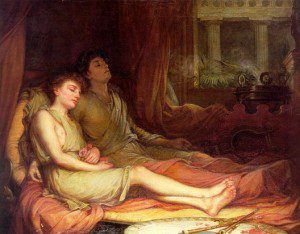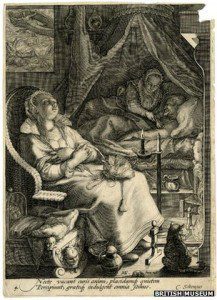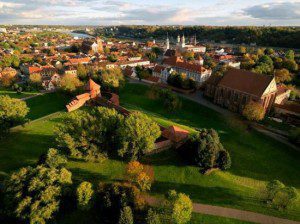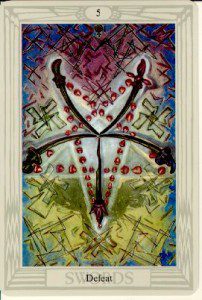
We humans don’t sleep the way we used to.
No, this is not the lead in for a commercial for some new kind of sleeping pill. It is a statement about how our contemporary sleep patterns are radically different from the way humans have slept for most of our evolution on this planet. Our expectations for sleep give short shrift to dreams, and may be a major source of disorders such as insomnia and the misnamed “sleep paralysis.”
For tens of thousands of years, before the introduction of artificial lighting, most humans thought that what the pushers of sleep meds promise – an uninterrupted night of seven or eight hours’ sleep – was an unnatural and undesirable thing.
Experiments by a team led by Dr Thomas Wehr at the National Institutes of Mental Health have supplied compelling evidence of how our technology has ripped us from the old natural cycle.Deprived of artificial lighting for several weeks, the typical subject evolved the following pattern: lying awake in bed for an hour or two, then four hours sleep, then 2-3 hours of “non-anxious wakefulness” followed by a second sleep before waking for the day’s activities. One of the most exciting findings in Wehr’s study involved the endocrinology of the night watch. The interval between first sleep and second sleep is characterized by elevated levels of prolactin, a pituitary hormone best-known for helping hens to brood contentedly above their eggs for long periods. Wehr concluded that this liminal intermission can produce benign states of altered consciousness not unlike meditation – if we are available to hang out in the interval between sleeps.
Wehr and his team put their subjects on the Paleolithic plan, without alternatives to electrical light such as candles or fire or oil lamps. The Paleolithic two-sleeps cycle wasn’t only a stone age phenomenon; it was characteristic of how people spent their nights until gas lighting and then electricity became widespread. A seventeenth century Scottish legal deposition describes a weaver as “haveing gotten his first sleip and awaiking furth thairof.” Sleep historian Roger Ekirch writes in his excellent book At Close of Day that “until the modern era, up to an hour or more of quiet wakefulness midway through the night interrupted the rest of most Western Europeans” – and presumably most other people – so that “consolidated sleep,such as we today experience, is unnatural.”

This may help to explain the extent to which so many of us in our urbanized society are out of nature and out of touch with dreaming. “Segmented sleep” was the norm for our ancestors until quite recently, as it remains for some indigenous peoples today. Like Virgil and Nathaniel Hawthorne, the Tiv of central Nigeria speak of “first sleep” and “second sleep”. They wake at any time during the night and will talk to anyone in the hut who is also awake – often about their dreams.
Most interesting, the state “twixt sleepe and wake” that the French called dorveille was widely regarded as an excellent time to birth new ideas. In 1769, the artful London tradesman Christopher Pinchbeck advertised a device called a “Nocturnal Remembrancer”, a parchment tablet inside a box with a slit to guide the writing hand in the dark to enable “philosophers, statesmen, poets, divines and every person of genius, business or reflection” to secure the “flights and thoughts which so frequently occur in the course of a meditating, wakeful night.”
For all of my adult life, I have been a “biphasic” or “polyphasic” sleeper; here “biphasic” means sleeping in two distinct periods, and “polyphasic” means sleeping in several phases. I find I do much of my most creative work after rising from a first sleep of two or three hours. If I am at home without external commitments, I may then work and read, record my dreams and inspirations, blog a little and let my imagination play through the night and on until lunchtime, when my second sleep would be an afternoon nap. If I have to go out to travel or teach, I may head back to bed for an hour or two around the time most people are getting up.
According to the conventional wisdom of many sleep doctors and pill-pushers, this makes me something of a freak show. I would contend that I am simply doing what comes naturally, for me, and was natural for most of our ancestors and has never been exotic for creative people, whose breakthroughs often come at 3:00 or 4:00 in the morning.
This polyphasic dreamer wants to thank the BBC News Magazine for helping to spread the word that conking out for a straight 8 hours every night is not necessarily the most healthy, restful or creative approach to sleep and is not even “normal”, when compared with the record of human life on the planet. The BBC article by Stephanie Hegarty, titled “The Myth of the Eight-Hours Sleep” draws on the experience of sleep researchers who are wise enough to buck conventional wisdom on how we are supposed to sleep. “Waking up during the night is part of normal human physiology,” says sleep psychologist Gregg Jacobs. The idea that we are required to sleep in a consolidated block is damaging, he suggests, when it makes people anxious because they find themselves awake in the middle of the night. Russell Foster, a professor of circadian neuroscience at Oxford, notes that while “many people wake up at night and panic, what they are experiencing is a throwback to the bi-modal sleep pattern” of our ancestors.
In an article in Pyschiatric Times titled Broken Sleep May Be Natural Sleep, Walter A. Brown MD suggests that a patient troubled by broken sleep may find it therapeutic to learn that this pattern is quite natural – shared with giraffes and chipmunks and other animals as well as ancestors – and probably the “historic norm” for humans. He is correct.
Next time you find yourself awake in the middle of the night, don’t fret or complain. Revel in the possibilities that may be open to you.

